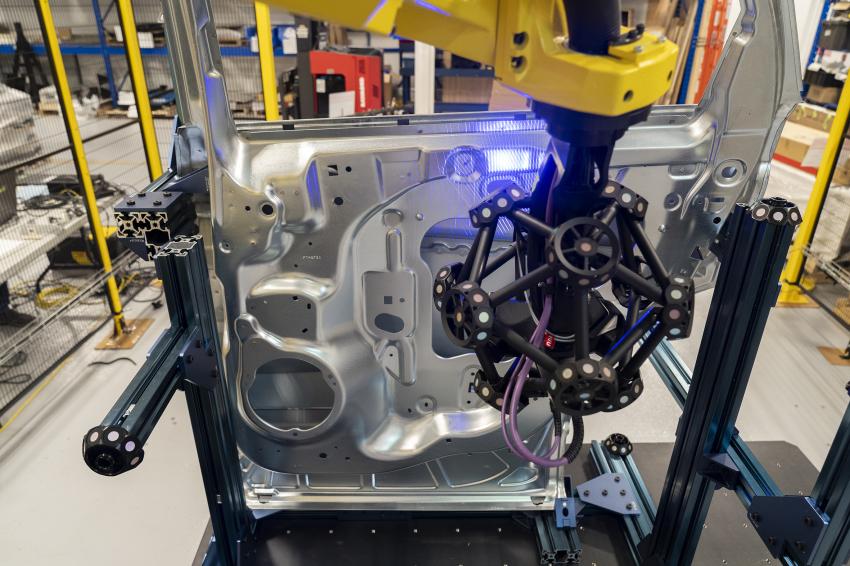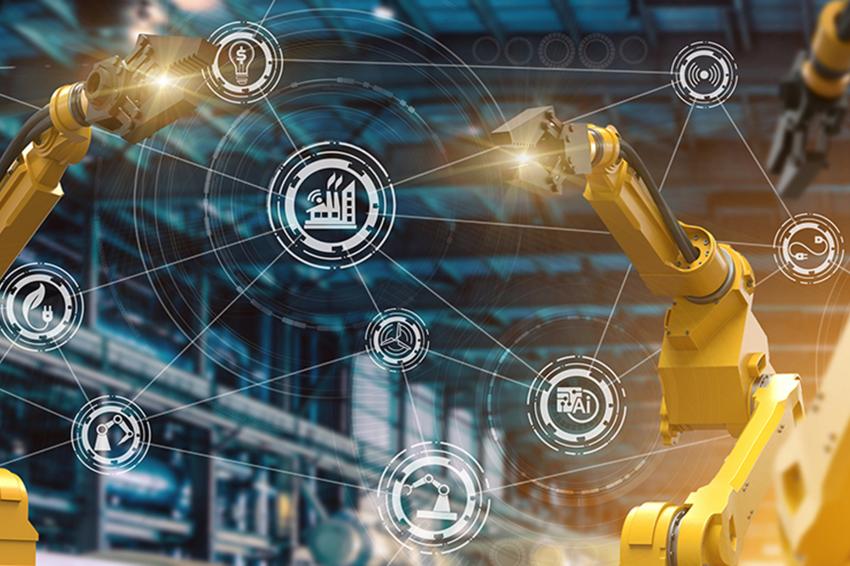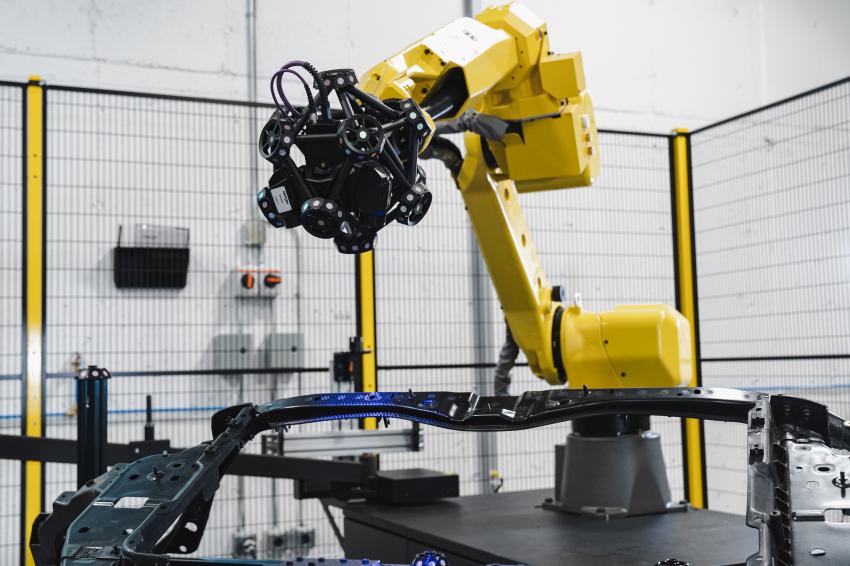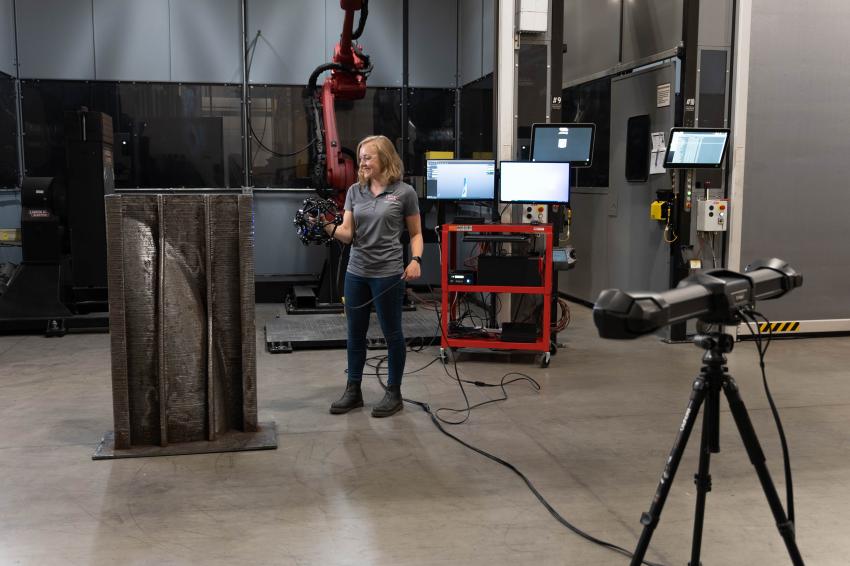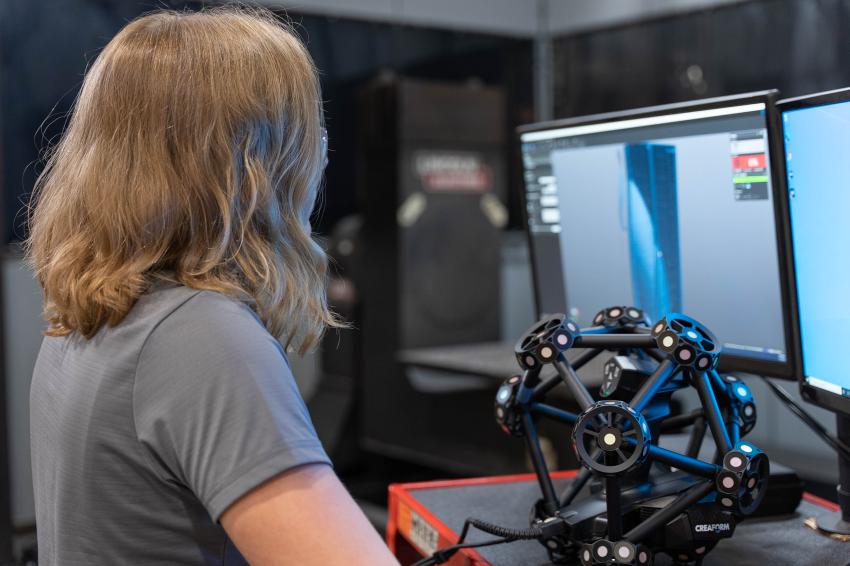Quality Assurance Systems in Transition
Demands Placed on Inspection Systems by AI-assisted Design and Production
The factory of the future is one step away. A step away from the just-in-time principle common today to optimization methods that are not limited to parts production but start with mold design – conceived by computers with computational methods that surpass the human mind. This would enable part geometries that have not existed before, and that could be produced by means far more advanced than traditional methods. The only constant that would remain from our current manufacturing processes is the need for quality control, which as final result would be fully automated inspection.
Three elements are essential to the factory of the future: Robotics, Additive Manufacturing and Artificial Intelligence. In this article, we will try to outline the impact, consequences and, most importantly, the benefits that such a future may have on company growth and sales.
Robots Prevail in Factories of the Future
It is possible to foresee a future in which no one enters or circulates through factories, as machines perform all operations, transforming raw materials into final goods in the fastest and safest way possible. Consequently, the plant essentially becomes a space where robots unfold an electromechanical ballet, choreographed to the millisecond and performed relentlessly in a peaceful yet roaring environment.
In the absence of humans, safety standards can be reimagined, protocols can be reviewed, operating speeds can be accelerated, and full shift can be optimized because the health and safety of workers are no longer a concern. The lights can even be turned off since all actions are guided by optical and motion sensors.
While today’s factories are designed to enable material handlers to move around safely, it is quite different for the factory of the future. In fully automated plants, tireless robots move effectively beside each other across vast floors, making turns tightly adjacent to one another. They perform their tasks dutifully and only pause for quality control.
Amazon and Boston Dynamics Push Robotics Deployment
Amazon’s warehouses, with their inventory of goods and retrieval systems that use a series of robots to move the merchandise from makers to users, already offer a glimpse of the factory of the future. And the progress should not stop there, as Amazon is also developing drones and self-driving vehicles to speed up deliveries and complete their goods’ robotic journeys in style.
Boston Dynamics has also contributed to the robotics boom by developing mobile and versatile humanoid robots for handling cases in different warehouse operations. These smart robots accelerate our progress toward the factory of the future by automating case handling anywhere in the warehouse with advanced mobility and state-of-the-art vision systems, eliminating the need for new, fixed infrastructures.
Additive Manufacturing is Shaping the Future
Some industries have already taken a step into the future by leveraging the power of the most advanced manufacturing technologies. From accelerated prototyping and improved agility in customizing designs to significant reductions in surplus part inventory, additive manufacturing is a disruptive technology that has the potential to revolutionize manufacturing from both cost and efficiency perspectives.
Medical devices, unmanned aerial vehicles, and jet engines can now be made with industrial-grade 3D printers. Not surprisingly, the range of printable materials continues to expand. In addition to basic plastics and photosensitive resins, they now include ceramics, cement, glass, numerous metals and alloys, and new thermoplastic composites infused with carbon nanotubes, and fibers.
Among the pioneers of metal 3D printing is Lincoln Electric Additive Solutions, manufacturer of large-scale prototype, production, and replacement parts and tooling made of steel and stainless steel, Invar, and nickel alloys.
Because of the size and complexity of the metal parts that Lincoln Electric 3D prints, an accurate assessment of the dimensions is fundamental to avoid quality consistency issues. Nevertheless, conducting quality control on very large and heavy parts that are still too hot to touch is a challenge that, thus far, can only be achieved with non-contact, portable, and accurate 3D scanning technologies. Therefore, having access to modern quality control to spot defects and deviations directly in production remains essential to the future advancement of additive solutions.
Artificial Intelligence Reimagines Design
The next step is to incorporate artificial intelligence into part design and, thus, discover avenues that have not yet been explored. Since human intelligence approaches design in a very pragmatic way, the correlation between part geometry and its mechanical functions is usually quite direct. Now, however, with the rise of artificial intelligence and its millions of calculations per second, we will be able to create shapes never seen before, with a level of complexity that could not have been imagined by a human alone.
Starting with the attachment points and the various engineering constraints (thermal, stress, or strength) to which the part will be subjected in its environment, artificial intelligence can then simulate the entire network of constraints and obtain, iteratively, an optimized design that minimizes material use and production waste while maintaining performance standards and meeting design goals.
This form of artificial intelligence that leverages the power of machine learning to optimize the entire design-to-make process is called generative design. Increasingly popular with designers, it accelerates the whole design process, enabling companies to get to market faster with designs now perfectly adapted to their applications.
The Future of Making
With this new design know-how, manufacturers are now able to optimize their product durability, eliminate areas of weakness, and select more sustainable materials. They can also explore new design solutions that enable multiple components to be consolidated into solid parts, reducing assembly costs and simplifying the assembly chain. In short, artificial intelligence supplies the power to propel innovation to the front with better quality products designed and built in less time.
Quality Control Follows the Trend and Remains Effective
Although this technological progress is imminent, inspection and counter-validation are realities that will remain on manufacturing companies’ agenda. Of course, the machine assumes that it is performing the right task, that it is 3D-printing the part correctly. However, only a fail-proof inspection system can verify the dimensions of 3D-printed parts and confirm their manufacturing quality.
Thus, even if humans gradually transfer some responsibilities to machines, their role in part design and manufacturing is still indispensable to control quality, as they must validate that 3D-printed parts comply with the CAD files. Therefore, even if human error is eliminated, the fact remains that the machine is not perfect. The dimensions and quality of 3D-printed parts must still be controlled rigorously with accurate 3D measuring systems.
For this purpose, Lincoln Electric Additive Solutions turned to Creaform’s 3D measurement technology, the MetraSCAN 3D, to generate complete 3D surface models of their 3D-printed metal parts and compare them to the original CAD. This way, the inspection team can quickly verify that each feature adheres to both the original design intent and the expected tolerances.
Automation is also Revolutionizing Manufacturing Quality Control
Automation is also disruptive to quality control. Production floors, where handheld 3D scanning solutions were commonly seen, are now making room for automated quality inspection systems. Made of powerful robot-mounted optical 3D scanners, these robotic cells improve quality in a number of ways: they eliminate human error, improve repeatability and accuracy, enable the creation of more complex parts, and identify errors along the way.
Thus, automation makes part inspection faster and product quality more accurate and repeatable, ensuring that products are produced at the highest quality levels and are able to get to market more efficiently.
Design and Manufacturing are Moving Forward
Robots performing all operations from handling to quality control, algorithms creating the best geometries according to engineering constraints, industrial-grade 3D printers producing all types of parts regardless of their size, complexity, and materials – all of the blocks are already there for companies to build their factory of the future. The challenges imposed by Covid-19 and its impact on the workforce are additional incentives to make this technological and innovative shift. One way or another, the more that companies take the lead, the more their gains in productivity and competitiveness will be worth the investment.
Although machines perform more efficiently compared to human beings and artificial intelligence is capable of learning over time with pre-fed data and past experiences, they cannot learn to think outside the box and, thus, cannot be creative in their approach. Therefore, human genius, creativity, emotional intelligence, and sense of ethics will remain essential components of the factory of the future.
All in all, manufacturing methods will continue to evolve at the same pace that new design means are developed. As long as quality remains imperative, this synergy will unleash possibilities for the creation and production of an infinite number of new parts as yet unseen and unimagined. ¢
Author
François Leclerc, Program Manager at Creaform
Contact
Ametek GmbH - Division Creaform Deutschland
Meisenweg 37
70771 Leinfelden-Echterdingen
Germany
+49 711 185 680 30
+49 711 185 680 99

